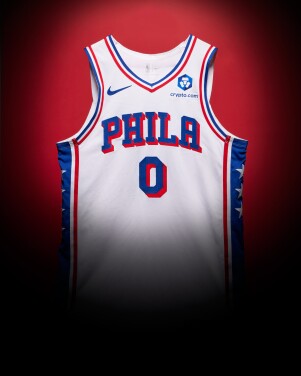P icture this: you’re digging through your attic and come upon a box of grandpa’s old stuff. Inside, an unopened packet of Topps baseball cards from 1952. Inside of that, a pristine Mickey Mantle. You heard about the one that sold for over $12 million in 2022, so could this be your lucky day? Well, maybe yes, maybe no.
There are several factors that contribute to the value of a trading card, and getting that value assessed might be harder than you think. Unless you’re Alex Goddard, Associate Specialist of Trading Cards & Modern Collectibles at Sotheby’s, you would be forgiven for thinking that all old trading cards are worth a mint. Turns out, it’s significantly more complicated than that, with everything from market whim to the tiniest of millimeters influencing the value of a card. We enlisted Goddard to help us break down what makes a trading card worth something (anything!) or, in fact, nothing, and how to find out where yours falls on the spectrum.
Why You Should Grade a Trading Card
First things first: get the card graded. Regardless of what you think the card might be worth, in the cutthroat trading-card industry, there are professionals who will grade your card within an inch of its life. These firms (the biggest of which is called PSA) will assess the condition of your card and then give it an official grade from 1 to 10, with 10 being the best.
Using specialized lighting and jeweler’s loops, a grader will inspect the card’s physical attributes in order to produce a final score. They will look at how centered the card is, whether the corners are in good shape and scratching to the surface, among other traits.
“The grading process can take a long time and can be expensive,” says Goddard. “If it comes up with a significantly lower score than you thought, you might even lose money on the card, or just break even.” These professional assessments are paramount in this market. “The market value between a 10, 9 and 8 can vary dramatically,” for the same card, says Goddard. For example, an O-Pee-Chee Wayne Gretzky rookie card graded at 10 by PSA recently sold for $3.75 million. The same card graded 9? $115,000.
Factors Determining a Trading Card’s Value
Other than the physical condition of a card, how can you tell its value? After all, you might have an absolutely perfect card that’s worth nothing because of who’s on it. Or a weathered card worth tens of thousands. A high value card sits at the nexus of a variety of factors which is why finding a true grail is a challenge indeed.
Famous Players Fetch Premiums
This one is fairly straightforward: the more well known the player, the more likely it will pop up as a high value. LeBron James is often a winner (in more ways than one), for example. Random players may sometimes fetch a price if the stars align in other ways, but big names tend to point to bigger numbers.
Rare Cards Are More Desirable
There are two ways a card can be considered rare. The first is rarity in high condition (of the aforementioned Gretzky card, for example, only 2 of the nearly 13,000 graded by PSA have come out as 10s at the time of writing). The second is manufactured scarcity – i.e., a card company only prints 10 of certain card, or maybe even just one.
Collectors Love a Good Story
Like many items that come to auction, provenance plays into the final price of a card. Whether the card itself has a good story (the current “holy grail” of trading cards, according to Goddard, is a 1909 Honus Wagner from the T206 set – one of which is in The Metropolitan Museum of Art. No matter what the grade, this card can bring in a price in the high six-figure range – even certain 2s can fetch high seven figures and beyond, as in the case of one SGC-graded example! The cards are rare because Honus himself stopped the printing of them, the reason for which is the subject of much trading card lore.
Does the Card Look Cool?
Is your player adopting an interesting pose? Is there a compelling design element? Gilt edging? Color matching between the jersey and the rest of the design? It may seem obvious, but these aesthetic qualities can add to the value of your card.
Age Isn’t as Big of a Factor as You Might Think
Don’t be fooled: old doesn’t necessarily translate to gold. If you have an old card in fantastic condition and it hits the above factors? Get thee to a grader, stat. But a new card that’s extraordinarily rare (a 1-1, for example) might fetch a high price, too.
And once your card is graded and you’re ready to part ways, get in touch with Goddard or another Sotheby’s specialist who can help you get top dollar for your trading-card treasure.
Shop Sneakers, Sports Memorabilia & Collectibles
Shop NBA Mystery Boxes
Trading Cards are Sotheby’s newest department – and big things are coming up. Sign up to keep up to date.

































